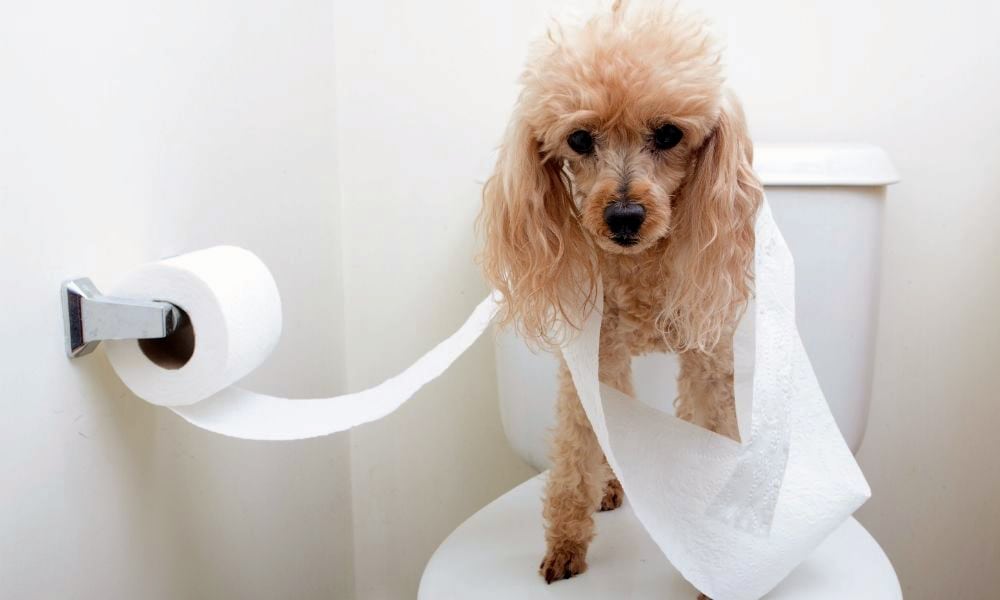Presented here down the page you can discover a good deal of worthwhile insights in relation to Don't Flush Your Pets Poo Down The Loo, Vet Warns.

When it pertains to throwing away waste, specifically animal waste, many individuals commonly turn to the hassle-free choice of flushing it down the toilet. However, this apparently simple service can have major repercussions for the atmosphere and public health. In this write-up, we'll discover why flushing animal waste down the commode is a bad idea and give alternative approaches for proper disposal.
Intro
Correct garbage disposal is critical for preserving environmental sustainability and public health. While it may appear harmless to purge animal waste down the bathroom, it can bring about numerous problems, both for the atmosphere and human well-being.
Threats of flushing animal waste
Ecological impact
Purging animal waste presents harmful germs and pathogens into waterways, which can adversely impact marine ecological communities. These pathogens can pollute water resources and injury marine life, interfering with fragile environments.
Public health concerns
Pet waste consists of dangerous microorganisms such as E. coli and Salmonella, which can posture major health and wellness risks to people. Purging animal waste down the bathroom can pollute water materials, bring about the spread of diseases and infections.
Alternatives to flushing
Instead of flushing pet waste down the bathroom, there are several different disposal techniques that are much more eco-friendly and hygienic.
Composting
Composting animal waste is a green means to dispose of it. By composting, organic matter is broken down right into nutrient-rich soil, which can be utilized to feed gardens and plants.
Landfill disposal
Dealing with pet waste in a land fill is another alternative. While not as eco-friendly as composting, it is a safer alternative to flushing, as it stops the contamination of water sources.
Pet waste disposal systems
There are specialized pet waste disposal systems readily available that securely and hygienically throw away animal waste. These systems commonly make use of enzymes to break down waste and remove smells.
Actions to proper animal garbage disposal
To guarantee correct disposal of pet waste, comply with these actions:
Scooping and getting waste
Regularly scoop and bag pet waste using biodegradable bags. This stops waste from polluting the environment.
Making use of assigned waste containers
Dispose of bagged animal waste in assigned waste containers, such as garden compost bins or garbage dump bins. Avoid flushing it down the bathroom in all prices.
Cleansing can and family pet areas routinely
On a regular basis clean litter boxes and pet locations to prevent the build-up of waste and germs. Usage pet-safe cleaning items to maintain hygiene.
Benefits of appropriate disposal methods
Taking on appropriate disposal approaches for animal waste supplies several benefits:
Decreased environmental pollution
Correct disposal approaches minimize the risk of environmental pollution, safeguarding rivers and environments from contamination
Minimized risk of water contamination.
By staying clear of flushing pet waste down the bathroom, the danger of water contamination is dramatically reduced, securing public health.
Enhanced sanitation and health
Appropriate disposal methods advertise much better sanitation and health, producing a safer setting for both people and pets.
Final thought
In conclusion, purging pet waste down the toilet is hazardous to the environment and public health. By embracing different disposal methods and adhering to proper waste administration practices, we can lessen the adverse impact of animal waste and add to a cleaner, healthier planet.
What To Do With Dog Poo – The Do's And Don'ts Of Disposing Of Faeces
Dog poo bins
Some councils provide dedicated dog waste bins in popular dog-walking areas that can take dog poo that has been bagged but you can legally dispose of dog waste in any public litter bin, as long as it is securely bagged. This also applies to your wheelie bin at home.
Do not flush
Water companies do not recommend flushing dog faeces down the toilet because certain parasites can survive the water processing treatment and are potentially harmful to humans. You should also never consider flushing dog poo that has been bagged down the toilet as the bags will not break down and instead create severe blockages in the sewage system.
In the woods
The Forestry Commission promotes a ‘stick and flick’ method for dealing with waste in the woods. This means finding a stick and using it to flick any poo from off the path so that it is out of the way of other walkers. You could also bury it as long as it is not in an area where there might be livestock.
Livestock
Parasites found in dog poo can be transmitted to livestock if they inadvertently eat infected faeces that has been left on grazing land. This could result in the death of sheep or abortion in cattle so you should always make sure you pick up your dog’s waste in fields where livestock could be present.

On a regular basis clean litter boxes and pet locations to prevent the build-up of waste and germs. Usage pet-safe cleaning items to maintain hygiene.
Benefits of appropriate disposal methods
Taking on appropriate disposal approaches for animal waste supplies several benefits:
Decreased environmental pollution
Correct disposal approaches minimize the risk of environmental pollution, safeguarding rivers and environments from contamination
Minimized risk of water contamination.
By staying clear of flushing pet waste down the bathroom, the danger of water contamination is dramatically reduced, securing public health.
Enhanced sanitation and health
Appropriate disposal methods advertise much better sanitation and health, producing a safer setting for both people and pets.
Final thought
In conclusion, purging pet waste down the toilet is hazardous to the environment and public health. By embracing different disposal methods and adhering to proper waste administration practices, we can lessen the adverse impact of animal waste and add to a cleaner, healthier planet.
What To Do With Dog Poo – The Do's And Don'ts Of Disposing Of Faeces
Dog poo bins
Some councils provide dedicated dog waste bins in popular dog-walking areas that can take dog poo that has been bagged but you can legally dispose of dog waste in any public litter bin, as long as it is securely bagged. This also applies to your wheelie bin at home.
Do not flush
Water companies do not recommend flushing dog faeces down the toilet because certain parasites can survive the water processing treatment and are potentially harmful to humans. You should also never consider flushing dog poo that has been bagged down the toilet as the bags will not break down and instead create severe blockages in the sewage system.
In the woods
The Forestry Commission promotes a ‘stick and flick’ method for dealing with waste in the woods. This means finding a stick and using it to flick any poo from off the path so that it is out of the way of other walkers. You could also bury it as long as it is not in an area where there might be livestock.
Livestock
Parasites found in dog poo can be transmitted to livestock if they inadvertently eat infected faeces that has been left on grazing land. This could result in the death of sheep or abortion in cattle so you should always make sure you pick up your dog’s waste in fields where livestock could be present.

We were shown that write-up about 4 Reasons Why Dog Poop Cleanup is Important from a buddy on our other web address. Sharing is good. You won't know, you could be doing someone a favor. I take joy in reading our article about Don't Flush Your Pets Poo Down The Loo, Vet Warns.
Click Here